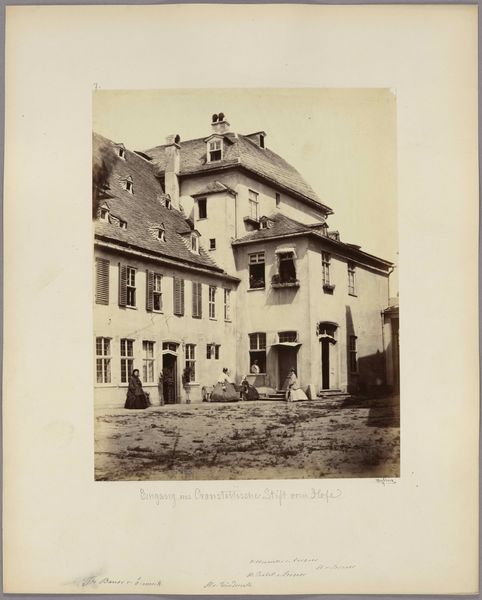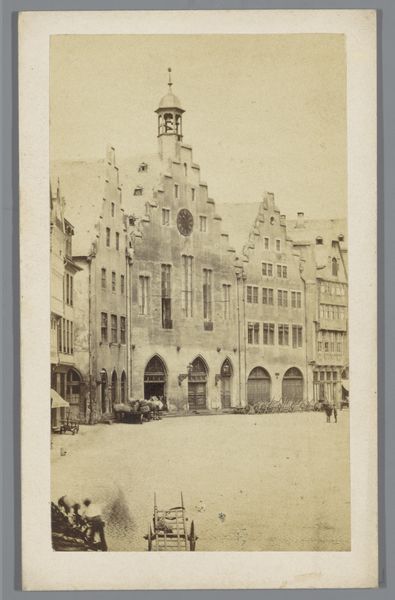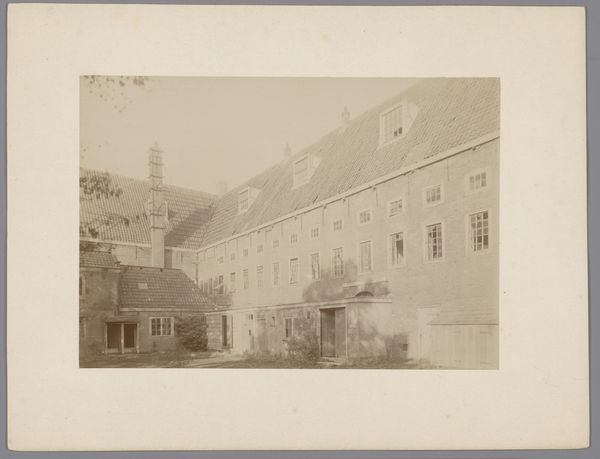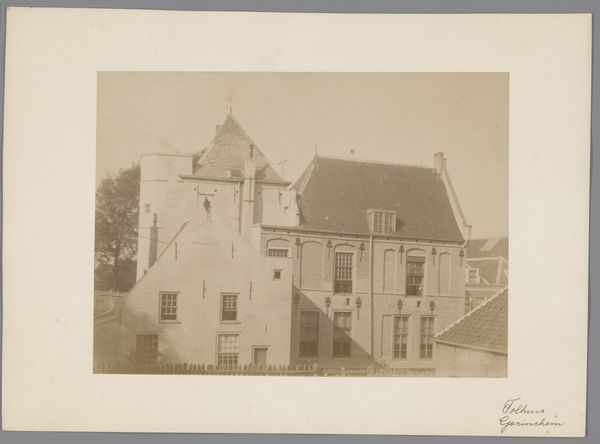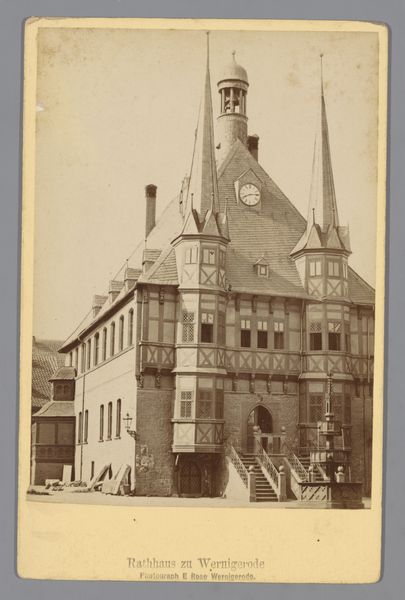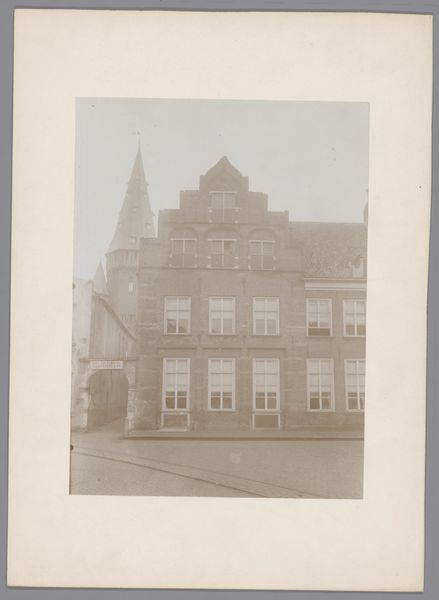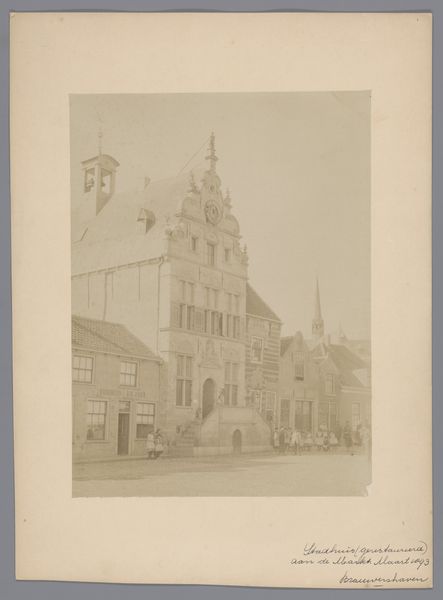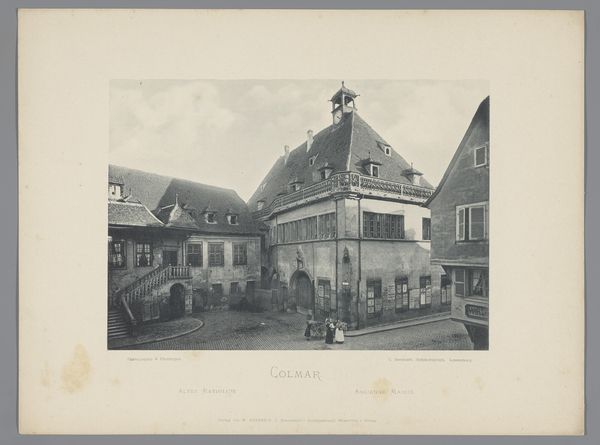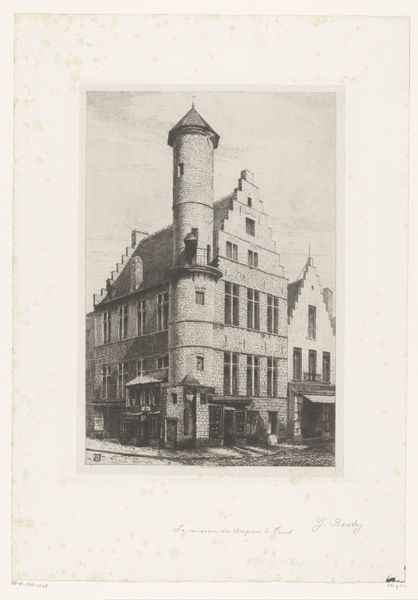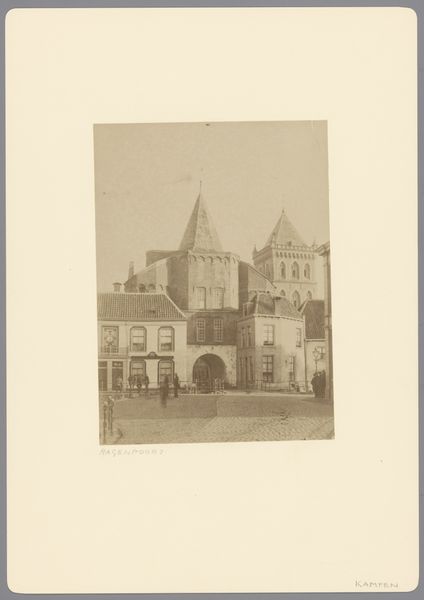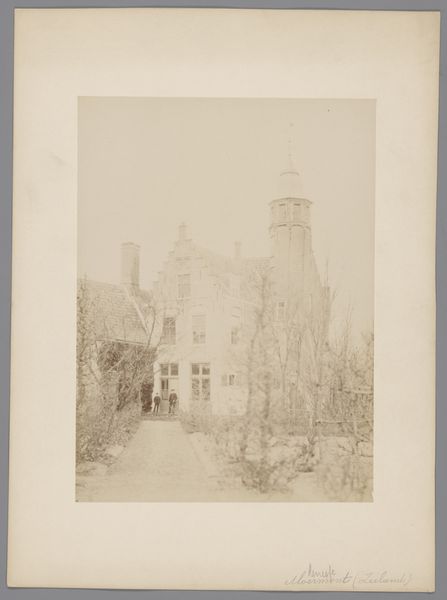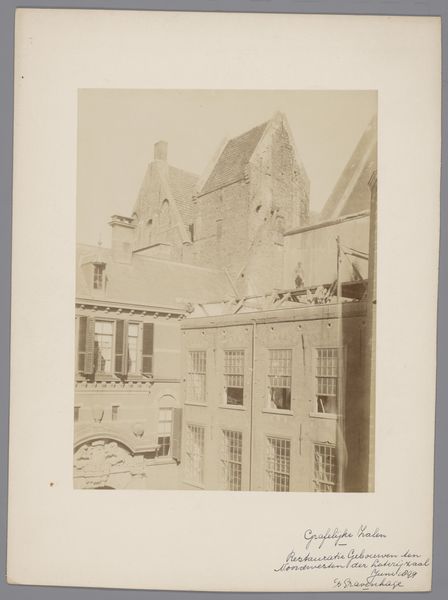
Frankfurt am Main_ The ancestral House Limpurg on the Römerberg, no. 1 1864
0:00
0:00
Copyright: Public Domain
Carl Friedrich Mylius made this albumen print of Frankfurt am Main sometime in the mid-19th century. It depicts the ancestral House Limpurg on the Römerberg, a historically significant location. Mylius's photograph serves not just as a record but also as a cultural artifact, reflecting the social values of his time. Consider the rise of photography in 19th-century Germany, coinciding with increasing industrialization and urbanization. Photography became a tool for documenting architectural heritage. This coincided with a growing sense of national identity. The image creates meaning through its meticulous capture of architectural details and the quiet urban life around the square. Historians often consult archives and period documents to understand the cultural significance of such images. These sources provide information about the social function of photography and its role in shaping collective memory. By examining photographic works, we gain insight into the dialogue between past and present.
Comments
No comments
Be the first to comment and join the conversation on the ultimate creative platform.
